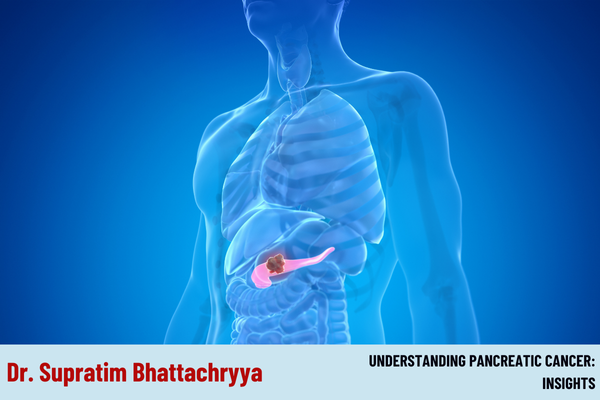Pancreatic cancer is one of the most aggressive and challenging forms of cancer to treat. Its symptoms often go unnoticed until the disease is in an advanced stage, making early diagnosis difficult. However, with advancements in surgical techniques, particularly robotic surgery, the outlook for patients has improved. Dr. Supratim Bhattacharyya, one of the best robotic cancer surgeons in Kolkata, sheds light on pancreatic cancer, including its symptoms, risk factors, and the role of robotic surgery in treatment.
What is Pancreatic Cancer?
Pancreatic cancer begins in the tissues of the pancreas, an organ located behind the stomach that plays a crucial role in digestion and blood sugar regulation. The most common type of pancreatic cancer is adenocarcinoma, which arises in the pancreas’s exocrine cells. The aggressive nature of pancreatic cancer makes early detection critical, but challenging.
Symptoms of Pancreatic Cancer
In its early stages, pancreatic cancer often does not cause noticeable symptoms. However, as the cancer grows, the following signs may appear:
- Jaundice: Yellowing of the skin and eyes, which occurs when the tumor blocks the bile duct.
- Abdominal and Back Pain: Persistent pain in the upper abdomen that radiates to the back.
- Weight Loss: Unexplained weight loss and loss of appetite.
- Digestive Issues: Nausea, vomiting, and changes in stool consistency.
- New-Onset Diabetes: Sudden onset of diabetes, especially in people without risk factors, can be a sign of pancreatic cancer.
Dr. Supratim Bhattacharyya stresses the importance of early medical evaluation if any of these symptoms persist, as they could indicate pancreatic cancer or other serious conditions.
Risk Factors for Pancreatic Cancer
Several factors can increase the risk of developing pancreatic cancer:
- Age: The risk increases with age, with most cases diagnosed in people over 60.
- Family History: A family history of pancreatic cancer or genetic syndromes like BRCA mutations can elevate risk.
- Smoking: Tobacco use is one of the most significant risk factors.
- Chronic Pancreatitis: Long-term inflammation of the pancreas can increase cancer risk.
- Obesity: Excess body weight has been linked to a higher risk of pancreatic cancer.
Treatment Options and the Role of Robotic Surgery
Treatment for pancreatic cancer typically involves a combination of surgery, chemotherapy, and radiation therapy. Surgery is the most effective treatment when the cancer is confined to the pancreas. Dr. Supratim Bhattacharyya, a pioneer in robotic surgery, explains how this advanced technique is transforming pancreatic cancer treatment.
Robotic Surgery: Robotic-assisted surgery offers greater precision, flexibility, and control compared to traditional surgery. It allows for minimally invasive procedures, which lead to smaller incisions, reduced blood loss, quicker recovery times, and less postoperative pain. In pancreatic cancer, robotic surgery enables surgeons to remove tumors more effectively while preserving as much healthy tissue as possible.
Conclusion
Pancreatic cancer remains a formidable challenge, but with early detection and advances in treatment like robotic surgery, patients have more options and better outcomes. Dr. Supratim Bhattacharyya, one of Kolkata’s leading robotic cancer surgeons, is at the forefront of offering cutting-edge care for patients with pancreatic cancer.
If you or a loved one are facing pancreatic cancer, consulting with an expert like Dr. Supratim Bhattacharyya can provide the guidance and treatment options needed for the best possible outcome.


